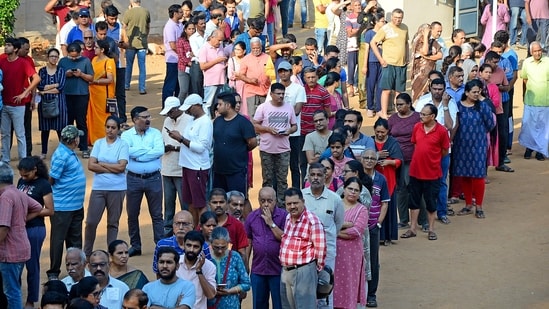Different states had different voter participation in the second round of the Indian Lok Sabha elections; Tripura led at 79.46% while UP trailed at 54.85%. Despite setbacks and victories, the exercise demonstrated the country’s dedication to democracy.
The second round of the Lok Sabha elections demonstrated the country’s steadfast dedication to democracy in the spectacular display of electoral democracy in India. Voting took place in 88 constituencies spread over 12 states and a union territory, and the country heard the voices of its people ringing through the vote boxes.
Engagement: The Lifeblood of Democracy
The states’ respective voting turnouts, which are an important indicator of a country’s democratic health, gave different pictures. The state of Uttar Pradesh, which has long been a hotbed of political intensity, had the lowest voter turnout of 54.85%, while Tripura achieved an astounding 79.46%. Manipur too surprised everyone by recording an impressive 77.32% attendance in spite of increased security.
It’s interesting to note that the southern state of Kerala, which is sometimes seen as a hotbed of political consciousness, had an astounding 70.21% voter participation, with Rahul Gandhi’s Wayanad seat leading the way with 72.70%. On the other hand, the metropolitan areas of Bengaluru presented a different image, with over 50% of voters choosing not to exercise their political right.
Obstacles and Achievements: Handling the Electoral Terrain
The second round of the elections had its share of difficulties, as with any major undertaking. The already difficult procedure was further complicated by reports of voter collapses caused by extreme heat, EVM failures, and voter boycotts. However, the electoral apparatus proved resilient, as officials promptly addressed issues and made sure that voting places around the country ran well.
A Patchwork of Voices: Diversity at Work
The real strength of Indian democracy is its capacity to welcome the diverse range of opinions and viewpoints that resound across the country’s enormous territory. Every vote cast reflected the dreams, goals, and worries of a varied population, whether it was in a busy metropolitan hub or a distant rural area.
It is crucial to consider the importance of this democratic process as the country prepares for the next round of voting. With every vote cast, the voices of the affluent and the poor, the urban and the rural, are amplified and given equal weight at the polls, helping to shape the destiny of our country.



